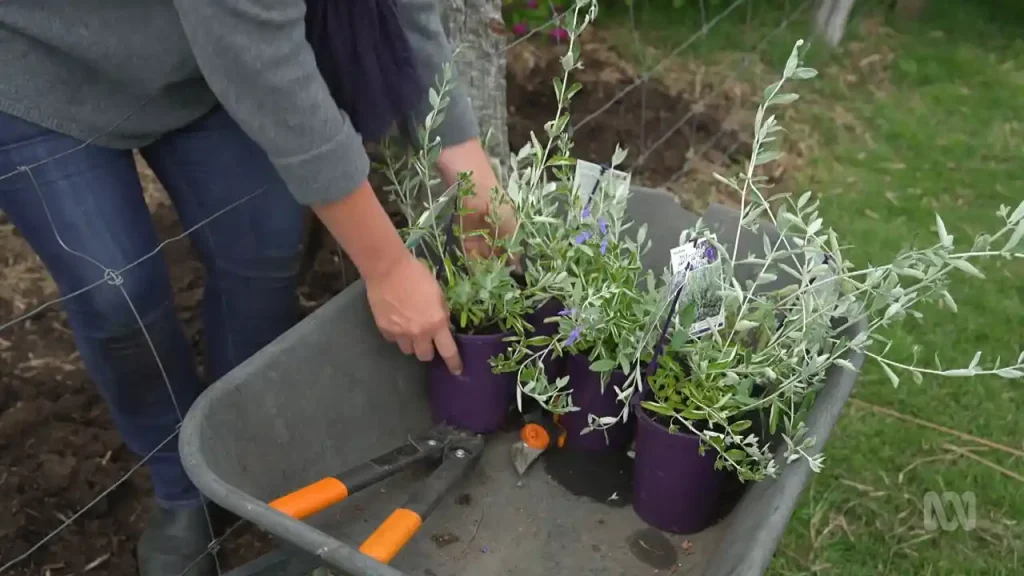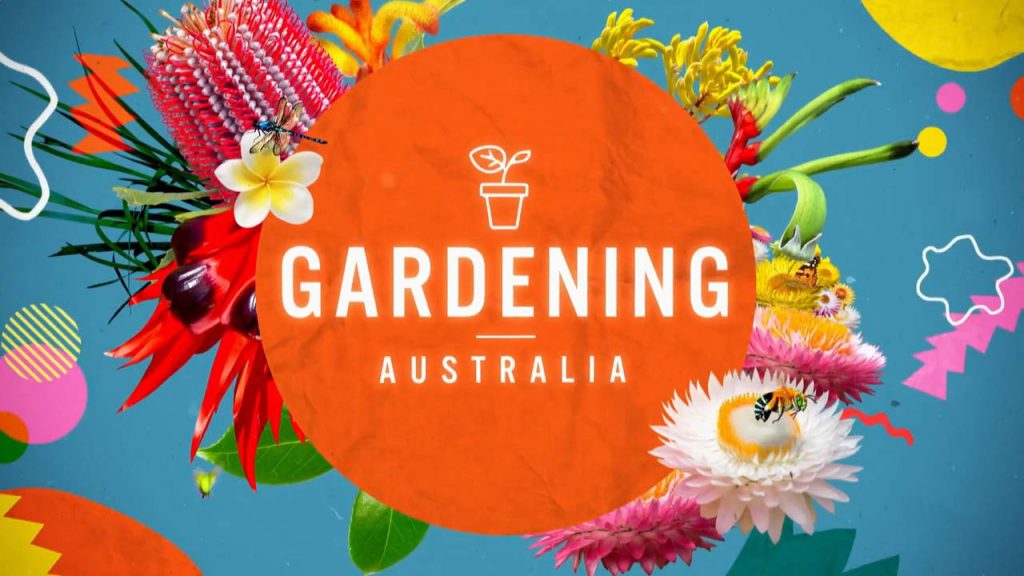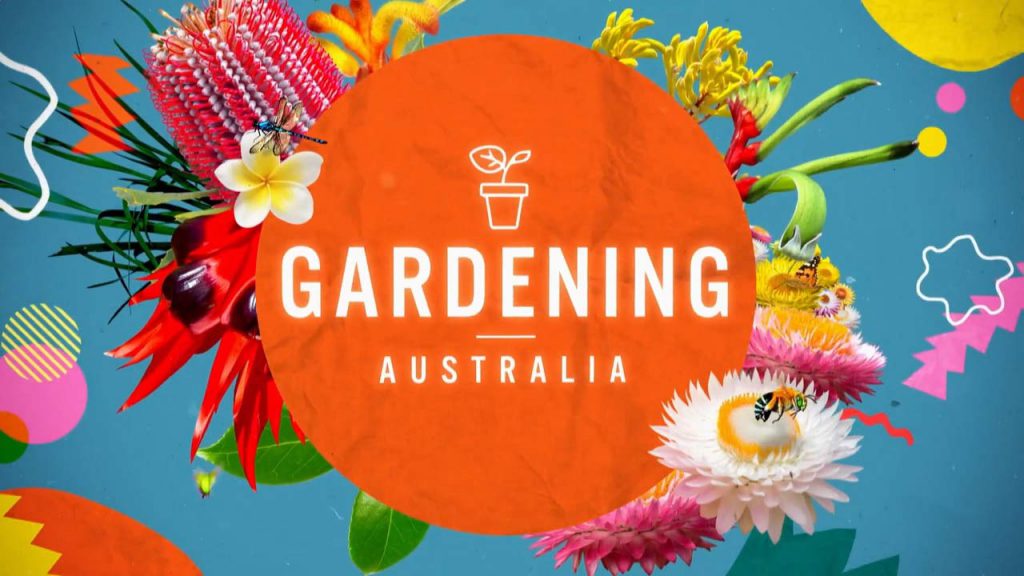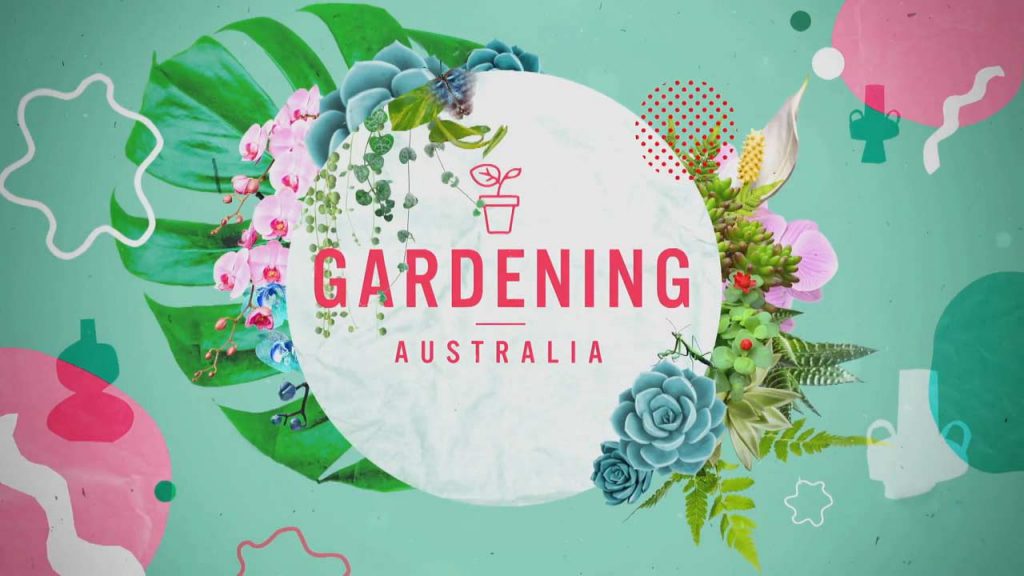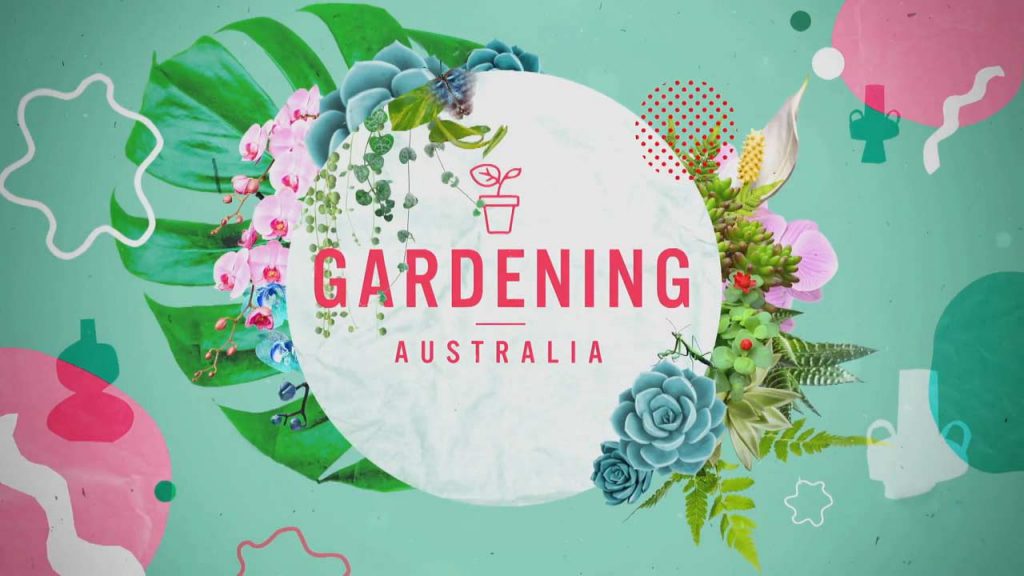Gardening Australia episode 11 2023: Tammy has a delightful encounter with a passionate gardener who is dedicated to cultivating a rich and diverse culture within their garden space; Hannah spends quality time with her father as they engage in the nurturing activity of planting together, strengthening their bond and fostering a love for nature. Costa embarks on an enlightening tour of a micro-forest, marvelling at the intricate ecosystem that thrives within its small yet lush confines. Meanwhile, Jerry finds tranquillity in a serene and beautifully designed garden, where every plant has been meticulously chosen to create an atmosphere of peace and harmony.
Sophie delves into the numerous advantages of hedges, shedding light on their aesthetic, environmental, and practical benefits, inspiring others to consider incorporating them into their own garden landscapes. Lastly, we have the pleasure of meeting a talented dancer who ingeniously weaves his artistic creativity into the very fabric of his garden, crafting a unique and mesmerising space that serves as both a source of inspiration and a testament to the power of imagination.
Gardening Australia is a highly popular and well-loved Australian television programme that centres around the fascinating world of gardening and provides invaluable gardening advice. Broadcast since 1990, this engaging show is brought to life by a team of highly skilled and knowledgeable gardeners and horticulturists. They impart their expertise on a wide array of gardening subjects, ranging from selecting the ideal plants for your unique garden to tackling common pests and diseases that may threaten your precious flora.
Each enthralling episode of Gardening Australia offers a visual journey through the rich and diverse horticultural tapestry that spans the vast expanse of this remarkable country. The programme delves deep into the realm of gardening endeavours and innovations, showcasing the breathtaking assortment of gardens and plant life that flourish in Australia’s multitude of climates and regions. From the verdant tropical paradises found in the northern reaches to the mesmerising wildflower blankets that grace Western Australia, Gardening Australia captivates viewers with an enchanting glimpse into the nation’s extraordinary botanical splendour.
Gardening Australia episode 11 2023
Plant Profile: Pansies and Violas
If you’re looking for a charming addition to your garden that will brighten up your winter months, look no further than the viola and pansy. Both flowers, which share the botanical name of Viola, are incredibly popular for their vibrant colours and sweet faces. In this guide, we’ll explore everything you need to know about growing these delightful little plants.
Viola and Pansy: A Colorful Charm for Your Garden
As mentioned, violas and pansies come in a wide array of colours, from white and cream to yellow, orange, red, and purple. Some even have beautiful two-toned doubles and etch-like markings resembling cat whiskers. Their small size makes them perfect for containers, and they can be grown in packs of six or ten for an instant burst of colour.
Gone are the days of buying them in punnets as bedding plants. Today, they’re sold as bloomers in perfect amounts for pots, bringing wonderful colour to any space.
Violas and Pansies: Differences and Similarities
While pansies and violas share the same botanical name, they have some notable differences. Pansies have larger and bolder blooms with a taller, more upright habit, while violas have smaller, more prolific flowers with a spreading habit.
In terms of tolerance to frost and partial shade, violas are more forgiving than their larger counterparts. Nonetheless, both require plenty of sunlight to thrive.
Growing and Caring for Violas and Pansies
Plant violas and pansies in well-draining soil enriched with compost or organic matter. Space them out by at least 15-20cm, and water them regularly to keep the soil moist. Deadhead spent blooms regularly to encourage new growth and prolong flowering. Fertilize them every few weeks with a balanced fertilizer, or a fertilizer high in potassium to promote blooming. Lastly, watch out for slugs and snails, which love to munch on these beautiful flowers.
Violas and pansies are beautiful and charming additions to any garden. With their vibrant colours, sweet little faces, and easy-to-grow nature, they’re a perfect choice for those looking for an instant burst of colour in their outdoor space. Whether you go for the bold pansy or the prolific viola, these delightful little plants will bring joy to your winter and beyond.
Designing with Dad – Gardening Australia episode 11 2023
Hannah’s had a lot of practice using steep slopes and this garden has many of the same challenges, but it comes with a special connection – it’s her dad’s! With her own garden perched on a high mountainous slope, Hannah shares her practical solutions to make this into an accessible and lush wildlife haven.
For the last two decades, Justin Moloney has lived in Toowoomba QLD where he regenerated a massive 40-acre property, bringing it back to life with native plants. Having recently relocated and downsizing to this new place in Hobart, he’sready and raring to make it something special. Justin says when choosing this house, there were two things that stood out. Firstly, it had a verandah which he says, “coming from Queensland with wrap-around verandahs, I couldn’t cope not having them.” The second enticement was an old stable out the back, which Justin says, “coming from a horse family, that was irresistible.” Hannah adds that it offers a bit of storytelling to the place, too.
Despite Justin’s experience in regenerating land and his active involvement in his new garden, Hannah’s had a strong hand in shaping this sloped, cool-climate garden. “I have been very dependent on your decision making about how to actually structure the place,” says Justin. Hannah helped out by bringing in crews to do some earthworks and build retaining walls, but says, “you’ve had some very strong opinions about how things should be. If it was my way, there would be maybe a fruit tree or a little vegie bed over there, but there’s none of that,” to which Justin laughs and replies, “nope, done that.” Justin’s focus is on habitat.
With the earthworks settling in well, Hannah says, “I’m quite happy with how this transformed the slope. It’s gone from something really steep to something that’s really easy to access.” Tiered levels have been created using boulders of stone which Justin says, are “an emphatic presence,” and the steel staircases housed into the slope allow access and flow between the terraces.
Citrus Success – Gardening Australia episode 11 2023
Citrus trees are a popular choice for backyards all across Australia, and it’s easy to see why. These trees are not only attractive, but they also fill the garden with delightful fragrances when they bloom and produce delicious fruit. However, growing thriving citrus trees requires some effort and know-how. In this article, we’ll share some tips and tricks from Josh, a seasoned citrus grower, to help you achieve citrus success.
Feeding Your Citrus Trees
Citruses are hungry plants, and regular feeding is crucial, especially in coastal areas with sandy, alkaline soil that lacks nutrients. To promote the health and vitality of your citrus trees and improve fruit quality, it’s essential to add additional trace elements. Josh recommends using a combination of pelletised poultry manure and compost, which he applies over the roots of his imperial mandarin. He also suggests using a foliar spray of trace elements on the canopy.
Watering Your Citrus Trees
Citruses are also thirsty plants, so consistent watering is key, especially when flowers and fruits are developing. Drip irrigation is highly efficient because the water supply goes straight to the roots. Dripline is also highly adaptable and can be repositioned as the tree grows. You want to make sure it lines up with the outside of the tree canopy where the new roots are growing. Once it’s in place, you can mulch over the top to help retain moisture.
Pruning Your Citrus Trees
Pruning is another crucial part of the care and maintenance regime for citrus trees, which flower and fruit towards the tips of the growth. Josh suggests pruning back your citrus trees by a third once they’ve finished fruiting for the season. This practice promotes new growth and keeps next season’s fruit within reach.
Dwarf Varieties of Citrus Trees
Citrus trees come in various shapes and sizes, and if you don’t have room for a full-size tree, why not try one of the smaller forms in a pot? The dwarf lime looks good year-round and produces plenty of fruit with fairly modest requirements. If you’re growing dwarf citrus in a pot, make sure to repot it every few years into premium potting mix, give it regular feeding and watering, and a bit of mulch on top. It’s a worthwhile investment of effort.
Growing thriving citrus trees is a labour of love that pays off in spades. By following these tips and tricks from Josh, you can ensure that your citrus trees look good, smell great, and produce bountiful fruit. Remember to feed your trees regularly, water them consistently, prune them appropriately, and consider growing dwarf varieties in pots if space is an issue. With a little bit of effort and patience, you’ll be rewarded with healthy, fruitful trees that are the envy of your neighbourhood.
Micro Greening
Costa meets with landscape architect Edwina Robinson at work building foliage-filled micro-forests in the suburbs of Canberra. If you haven’t heard the term before, Edwina says a micro-forest is “a dense pocket of urban vegetation that cools the landscape.” The project began as a response to climactic data and a need to act. “2019 was Australia’s hottest and driest year on record.” says Edwina, “In the ACT, we only had 358mm of rain, that’s about 58% of the average, so that was putting it just outside of a semi-arid zone. We know with climate change it’s likely to be hotter and drier in the future, so I wanted to do something about that.”
In the first trial site, Edwina chose plants that were hardy and could cope with extremes of drought. Some stock was sourced from a nursery that experiences both extreme temperatures, from -9°C in winter to 49°C in summer. “We deliberately didn’t plant eucalyptus because we were concerned people would be worried about a fire risk, (instead) we chose the Kurrajong because it’s been ranked as the number one species for a hotter drier future in Canberra, and the second one is Casuarina cunninghamiana.”
When choosing pockets of land to plant in, water runoff was a big consideration. They found sites with existing mounds and adapted the landscape at the top to be concave, “so they acted like a dish,” says Edwina. They also created trenches up to 800mm deep infilled with sand and gravel to store and redirect rainwater. Other water harvesting techniques used are bogs and sand infiltration points, which link down to the underground trenches. Edwina says, “it’s a really great way to water during a drought.”
The Ultimate Guide to Choosing the Right Fertiliser for Your Garden
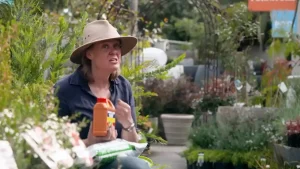
In the diverse world of gardening, choosing the right fertiliser can be a daunting task. With so many options available, it’s essential to understand the distinct benefits each type offers. This comprehensive guide aims to demystify fertiliser selection and help you make the best choice for your plants.
Organic Fertilisers: Nourishing Plants and Soil
Organic fertilisers are derived from once-living plant or animal materials, such as composts, manures, and pelletised manures. These natural substances not only provide essential nutrients to your plants, but they also break down gradually, enriching the soil over time. High-quality organic fertilisers are ideal for vegetables, flowers, and roses.
Key Advantages of Organic Fertilisers
- Environmentally friendly
- Boosts soil health
- Slow-release nutrients
- Suitable for a wide variety of plants
Foliar Fertilisers: Rapid Nutrient Absorption for Lush Growth
Foliar fertilisers are liquid solutions rich in nitrogen that provide immediate nutrient availability to plants. This type of fertiliser promotes abundant leafy growth, making it an excellent choice during cooler months when growth is sluggish. Another ideal time to apply foliar fertilisers is at the end of the season to give your plants a final boost. Popular examples include fish emulsion and seaweed extracts.
Benefits of Foliar Fertilisers
- Quick nutrient absorption
- Promotes vigorous growth
- Suitable for seasonal use
- Can be combined with other fertilisers
Native Fertilisers: Tailored Nutrient Solutions for Native Species
The suitability of using general fertilisers for native plants has long been debated. While many native species can thrive with a modest amount of organic fertiliser, they tend not to be too particular about their nutrient requirements. However, Proteaceous plants such as grevilleas, banksias, and hakeas are highly sensitive to excessive phosphorus. These species have evolved to extract minuscule amounts of phosphorus from natural soils, making a low-phosphorus native fertiliser the best choice for their growth.
Reasons to Choose Native Fertilisers
- Formulated for specific native plant needs
- Low-phosphorus options for Proteaceous species
- Supports healthy growth in native plants
- Aligns with natural nutrient availability
Selecting the Perfect Fertiliser for Your Garden
Understanding the different types of fertilisers and their unique benefits is crucial for making an informed choice. Organic fertilisers offer a holistic approach to plant and soil health, while foliar fertilisers provide an instant nutrient boost for vigorous growth. For those cultivating native species, specially-formulated native fertilisers cater to the specific nutrient requirements of these plants. Armed with this knowledge, you can now select the ideal fertiliser to help your garden flourish.
In Gardening Australia episode 11 2023 you will find answers to this questions:
- How to grow pansies and violas?
- How to care for citrus trees?
- How to create a micro-forest?
- What are the benefits of hedges?
- How to design a garden on a slope?
- How to choose the right fertiliser for your garden?
